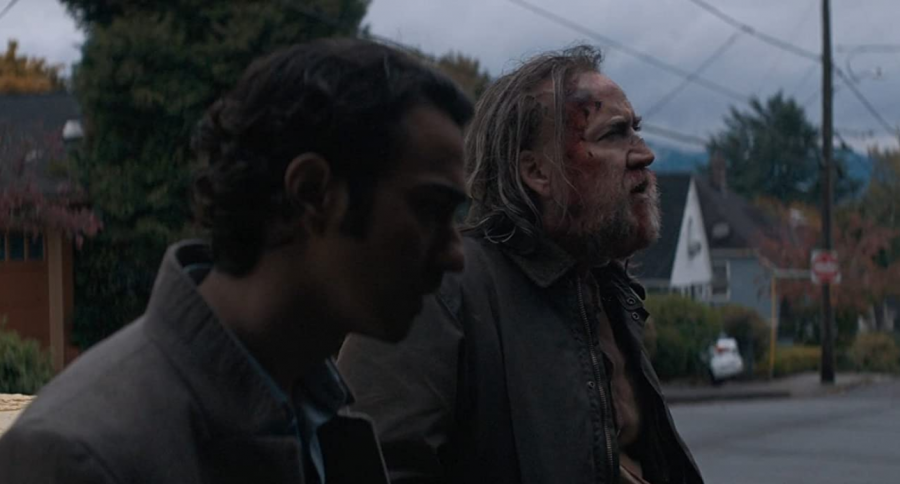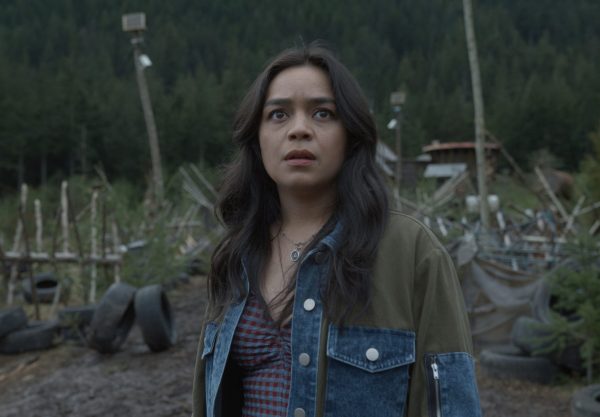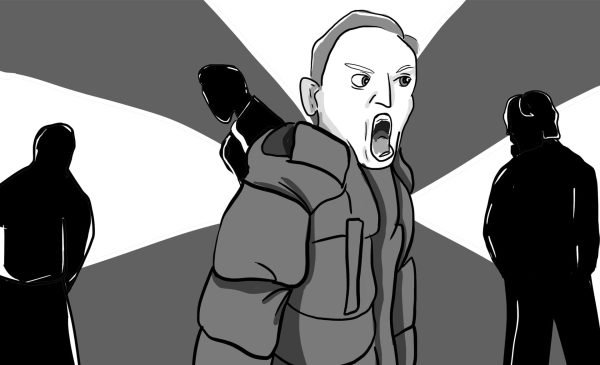Nicolas Cage surprises with solemn gastronomic meditation in ‘Pig’
imdb for The DePaulia
Alex Wolff and Nicolas Cage in “Pig.”
Nicolas Cage appears in “Pig” as a bloodied frontiersman akin to Hugh Glass out of “The Revenant” or the eponymous “Jerimiah Johnson.” And like Hugh Glass and Jerimiah Johnson, Cage’s Robin Feld is seeking retribution. Retribution for something that was taken from him — something which he loved dearly. Hugh Glass: his son. Jeremiah Johnson: his entire family. And Robin Feld: his pig. Hell hath no fury like a Nic Cage scorned.
Or so the film might slyly lead you to believe, anyway. On the contrary, and much to my surprise, writer-director Michael Sarnoski’s debut feature “Pig” sees Cage at his most thoughtful and understated. While the character of Robin Feld may look like a hardened mountain man, he’s in fact only a reclusive truffle forger who earns an apparently meager living for himself and his truffle pig by selling what he finds to Amir, a young entrepreneur active in the contemporary restaurant ecosystem of Portland. Once a renowned chef in the region, Feld vanished from the scene 15 years before the events of “Pig” take place, mysteriously sequestering himself away to a ramshackle cabin in the Oregon wilderness.
At first, the film puzzled me. I went in expecting something of a gritty revenge tale, and the film’s first act does indeed intentionally mislead in this direction, though it unfortunately fails to find its footing during this time. Robin is assaulted and his pig is dragged from the cabin kicking and squealing. The next morning, he sets off on foot in the direction of the city. What follows is a dreamy nighttime odyssey through Portland punctuated by offbeat dialogue and scenes of questionable intensity. I found myself not knowing what to feel as the myth of legendary chef Robin Feld achieved comical proportions during a dramatic reveal in an underground fighting ring. Finally, you think, we’re going to see what Robin’s made of. But he’s only beaten to a pulp.
Once the film finally escaped that game of the first act, whatever it was playing at, the pieces started to click together. It was around then that I began to take note of food as a recurring element in many scenes. Oftentimes it is the focus, either of the discussion taking place, of the camera, or both. We’re invited to reflect on our own profound experiences with food, be it something as plain as a persimmon or as farcically elaborate as the contemporary cuisine on show; embracing this theme, the film eventually, delicately, finally settles into itself.
“Pig” doesn’t celebrate food in the same vein as “Ratatouille” or “Tampopo.” It is not spirited; it is restrained. It is not joyous; it is somber. And it is not a celebration, but a solemn meditation. I wouldn’t call it a slow burn, as that would imply that the film trends towards an ignition. “Pig” is devoid of any such explosiveness. I would only call it slow. Too slow for some, perhaps. Certainly too slow for the couple sitting in the row behind me in the theater, who walked out of the film just before the halfway point. I’ll admit, it took me about that long to even grasp what I was watching. But I think the film deserves a chance. I eagerly await Sarnoski’s sophomore directorial outing, as well as whatever Cage surprises us with next.











